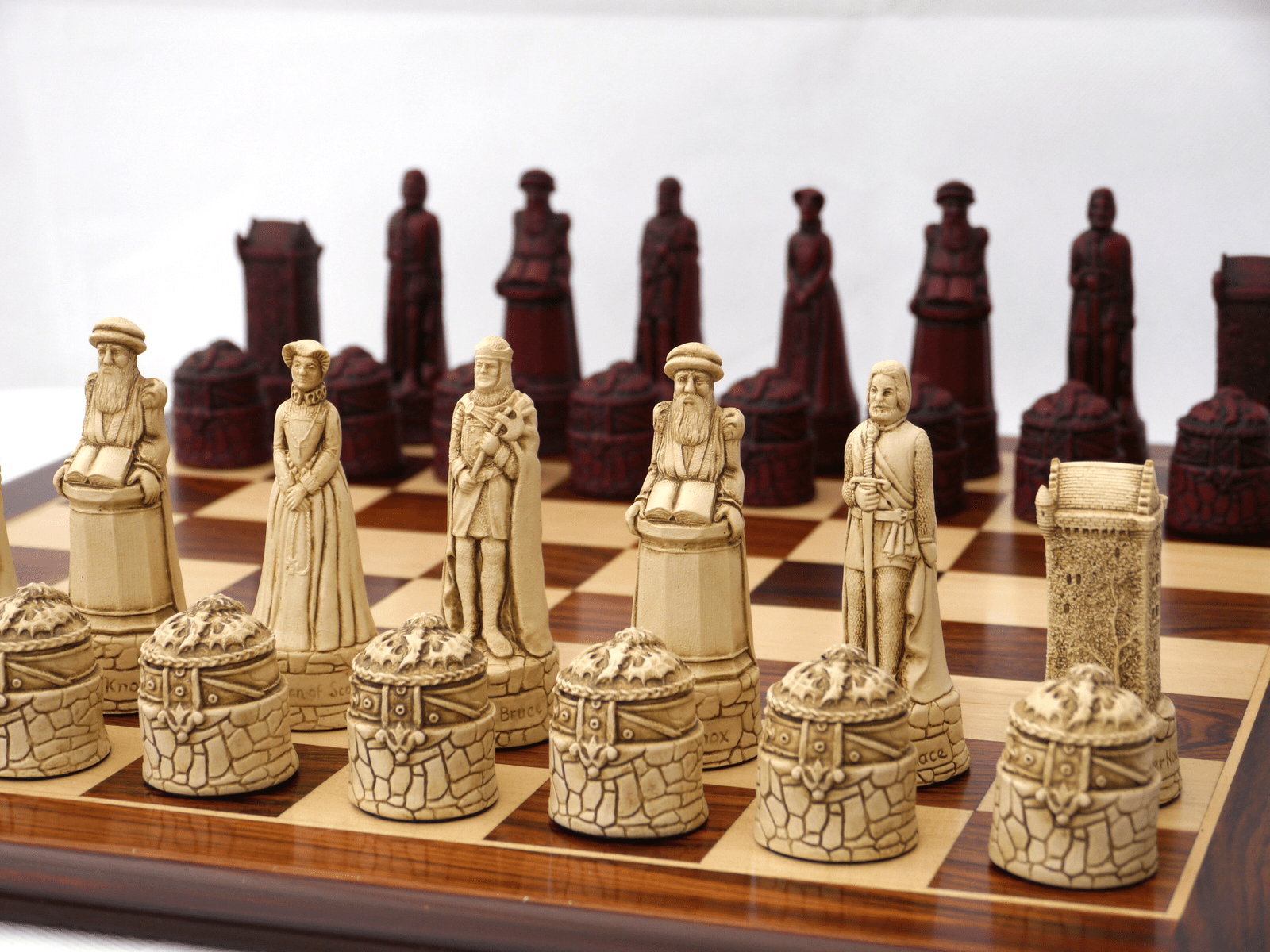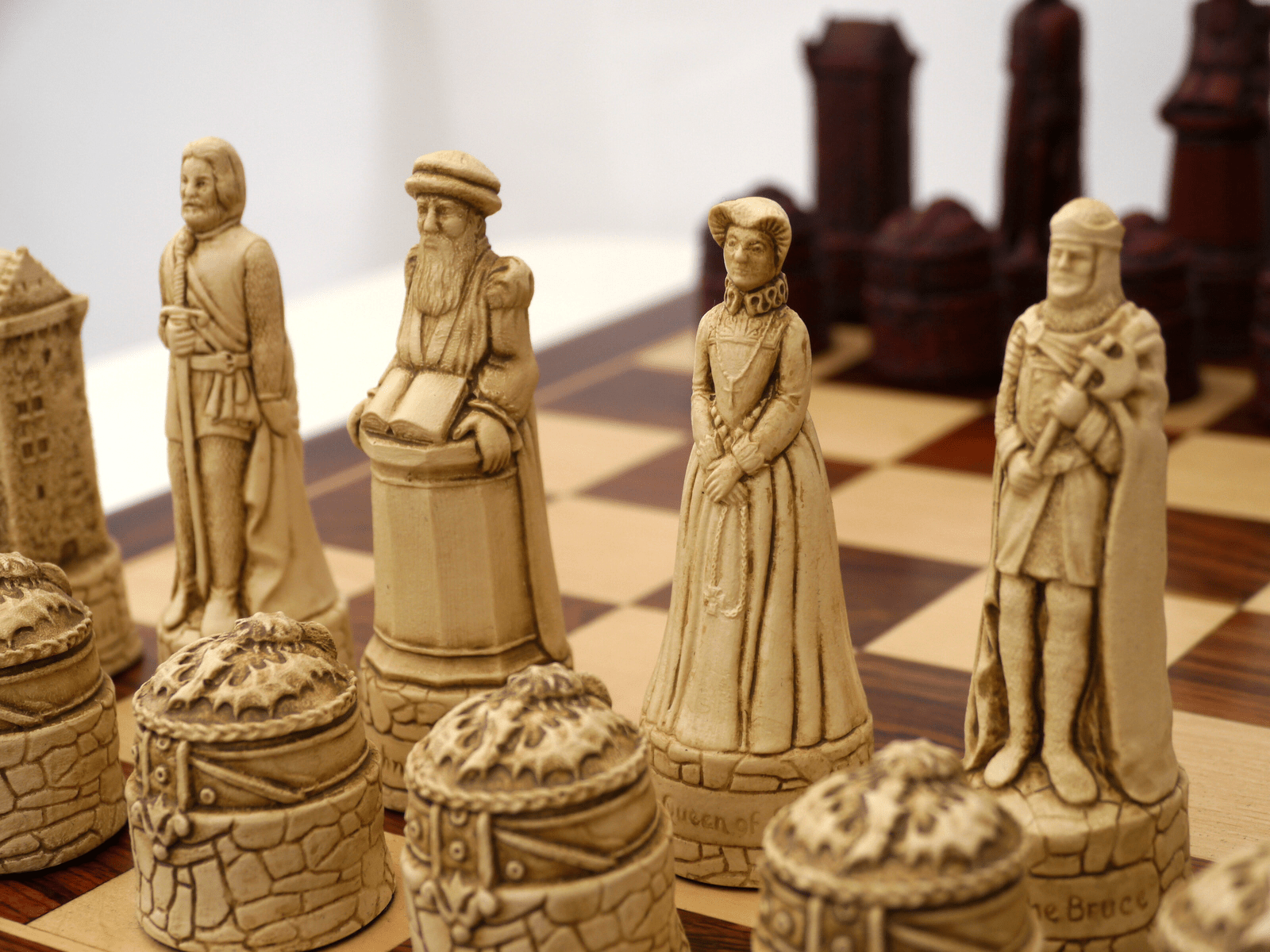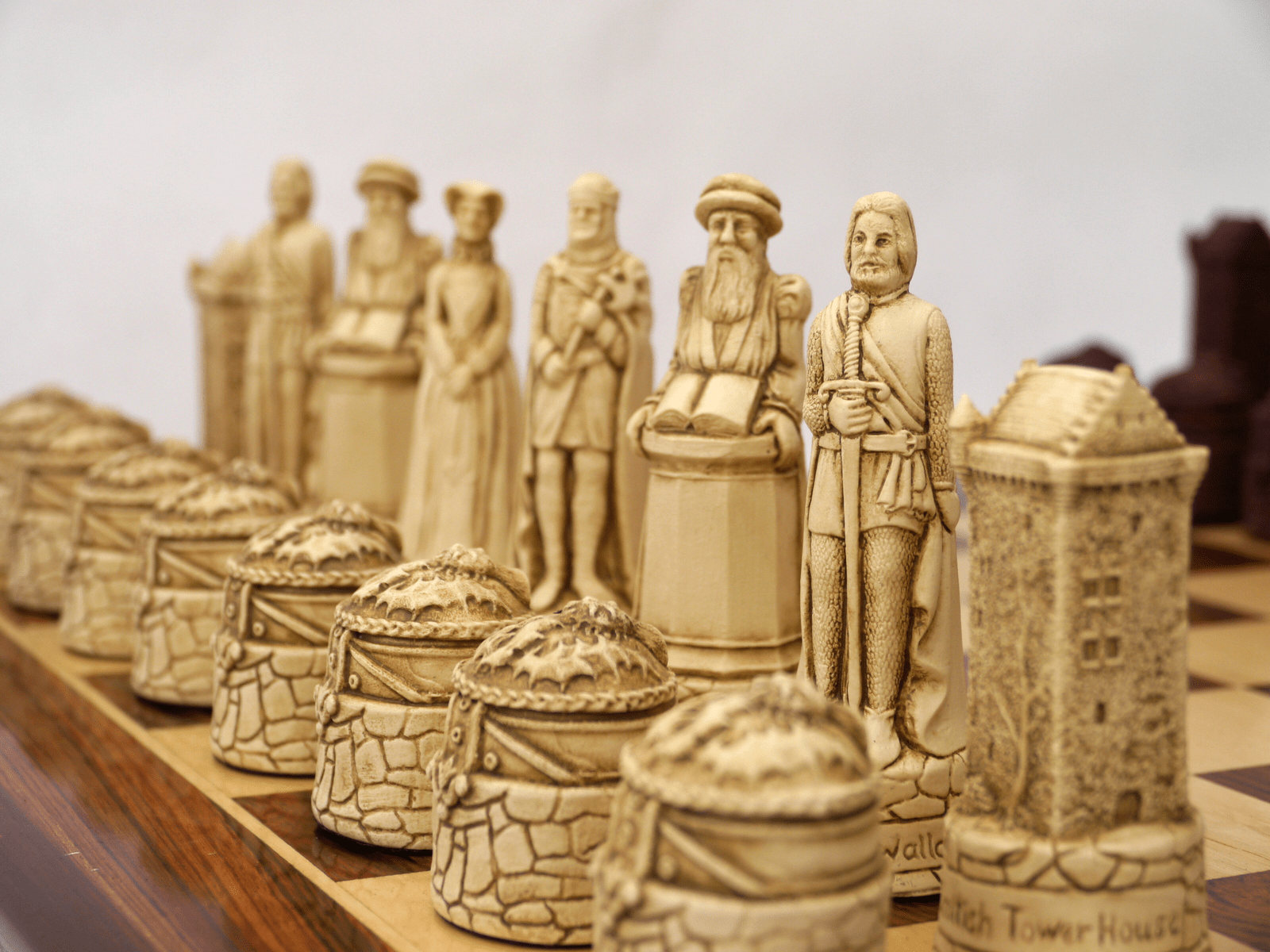













Scottish Chess Pieces by Berkeley - Cardinal Red
- 30+ FREE Gifts with Purchase

Chess House Guarantee
- Easy parts.When buying a chess set online, we've got you covered. With us, you have easy access to parts for years so your set is always playable.
- Safe, timely arrival.Every order is thoughtfully packed. Plus, delivery time is clear from checkout until it reaches your door.
- Peace of mind.Easy access to our friendly experts and 90 day, no-hassle returns.
That's why 20,965 people rate Chess House 4.8 out of 5 stars.
Mark (Verified Buyer) Today
Always fast, efficient, packed well, and good updates and communication on order even if just email.
About The Scottish Chess Pieces by Berkeley - Cardinal Red
Board Not Included
The history of Scotland is fascinating and complex; there are Roman soldiers, Vikings, noble clansmen, powerful ruling monarchs and even enlightened philosophers.
Scotland has experienced extraordinary growth and change during the course of its lifetime – it’s a place that has been invaded and settled many times and that has made mighty contributions to culture and society.
The Romans invaded Britain in the 1st century AD, during which time they added southern Britain to their empire as the province Britannia. They were, however, unable to subdue the fierce tribes in the north. A massive wall was built across the island from sea to sea on demand by the Emperor Hadrian to keep these tribes from invading Britannia. Parts of this Hadrian’s Wall still stands on the Scottish border today.
The Normans conquered England in 1066, after which many Anglo-Saxons from England settled in the Lowlands of Scotland. This is when the Scots gradually adopted the English ways. Feudalism was established and the chiefs of the clans became nobles. Scottish towns began to grow, trade was increased and Scotland thrived.
In the year 1290, the heiress to the throne, Margaret, died. Sir Edward I of England claimed the right to bestow the Crown and made John de Baliol the king. When Edward sought help from John against the French, John entered into an alliance with France. This was the beginning of the 260 years that Scotland held to this so-called ‘auld alliance’ with England’s enemy.
Edward crossed the Scottish border in the year 1296, took John prisoner and proclaimed himself the King of Scotland. The Scots weren’t very impressed with the change and they rose again. They were led by Sir William Wallace. Under his leadership they managed to route the English at the Stirling Bridge in 1297 and pursued them across the border. Edward returned the following year and inflicted a disastrous defeat on the Scots at Falkirk. Wallace was imprisoned and was brutally executed.
Robert the Bruce followed in Wallace’s foot steps and fought against the English in 1314 at Bannockburn near Stirling Castle. Only in 1328 did Edward III formally recognize Scotland’s independence.
After that, James IV of Scotland married Margaret the daughter of Henry VII of England in 1503. When he died the throne went to his baby daughter, Mary Stuart.
Mary was driven out by John Knox who was an follower of John Calvin, one of the leaders of the reformation. Mary returned to Scotland, however, in the year 1561, but was captured and imprisoned. She escaped and fled to England, where Queen Elizabeth I captured her and executed her.
Mary’s son, James VI, was brought up as a Presbyterian and took over the throne of Queen Elizabeth when she died. Scotland and England were united under one single king, however, Scotland remained a separate state with its own parliament and government.
The age-old rivalry between Scotland and England ended formally in 1707 when the parliaments of both nations agreed to the Act of Union. This act merged the parliaments of the two nations and established the Kingdom of Great Britain.
Eventually a new Scottish parliament was established in Edinburgh to oversee the territory of Scotland.
The rich and varied history of Scotland has been captured majestically in this beautiful chess set by Berkeley Chess celebrating Scottish heritage. Many of the key characters and symbols have been included as follows:
King: King Robert the Bruce
Queen: Mary Queen of Scots
Bishop: John Knox
Knight: Sir William Wallace
Rook: Scottish Tower House
Pawn: Scottish Thistle
- King Height 4 1/4″ (10.8cm)
- King Base 1 1/2″ (40cm)
- King Weight 3.4oz (96g)
- Set weight 5lb 14oz
- Made of a ratio of crushed marble and resin, and then finished with a felt underlay
- Boxed weight 7lbs
- 32 Chessmen
- Price includes set of pieces (boards available separately)





